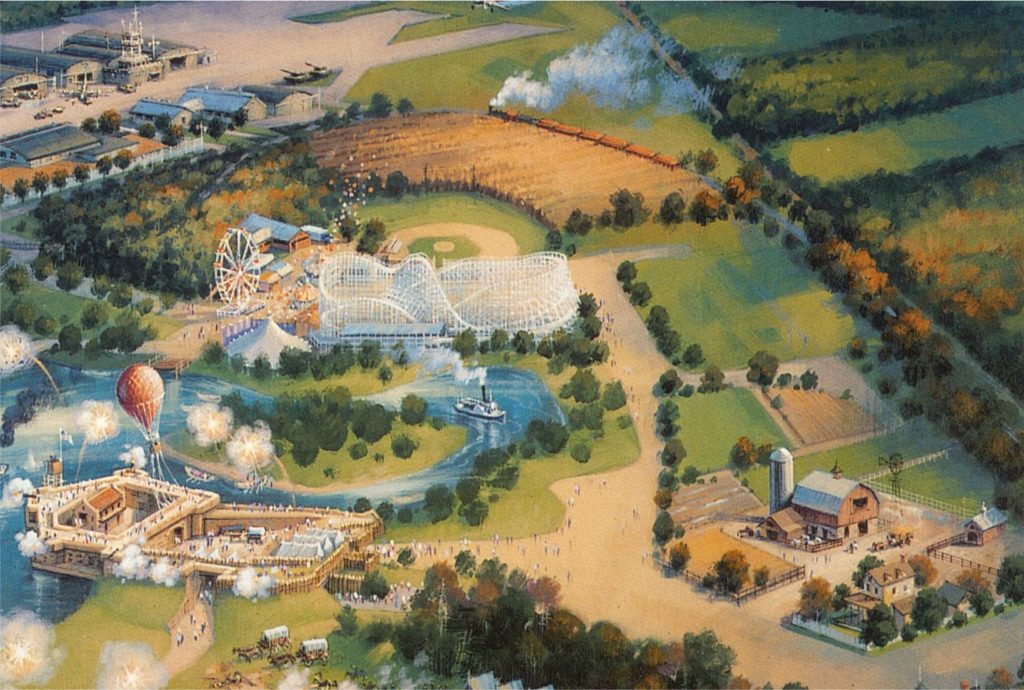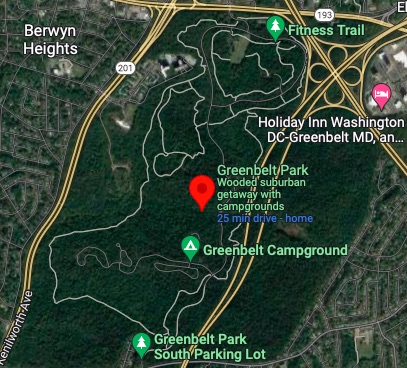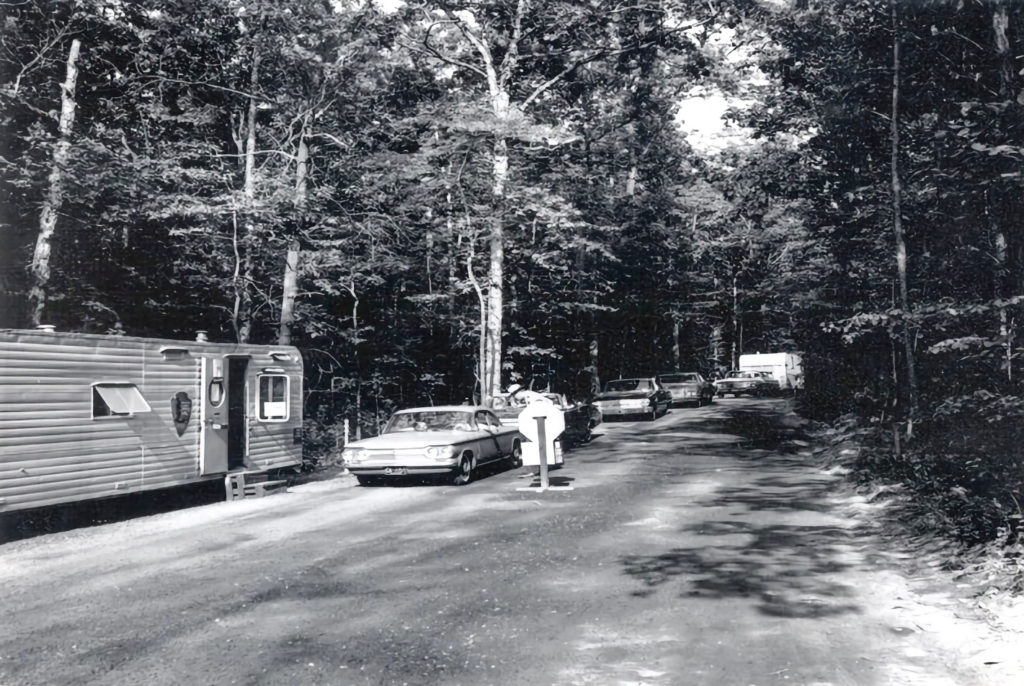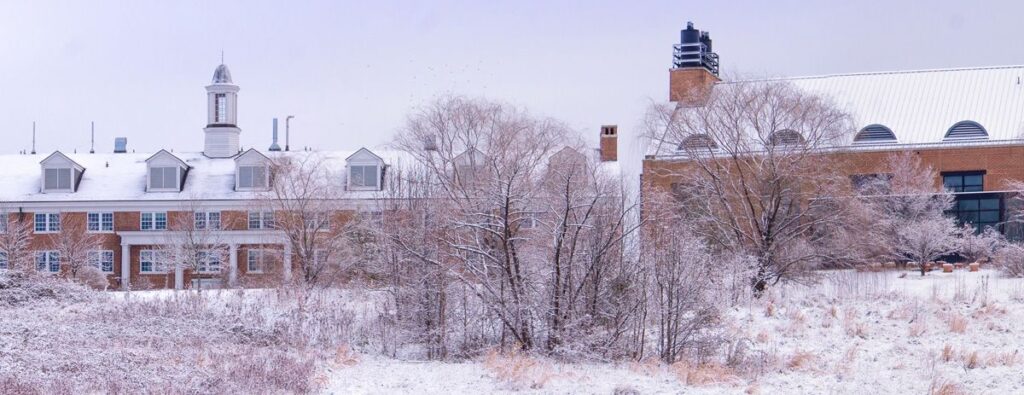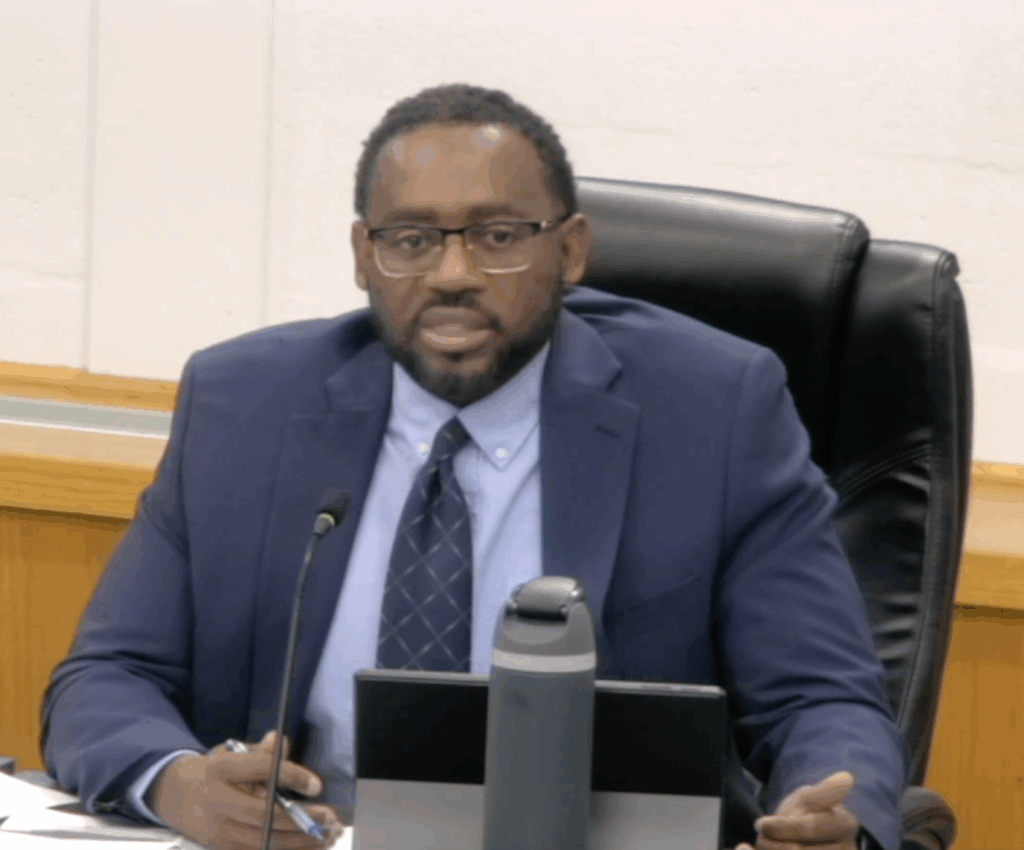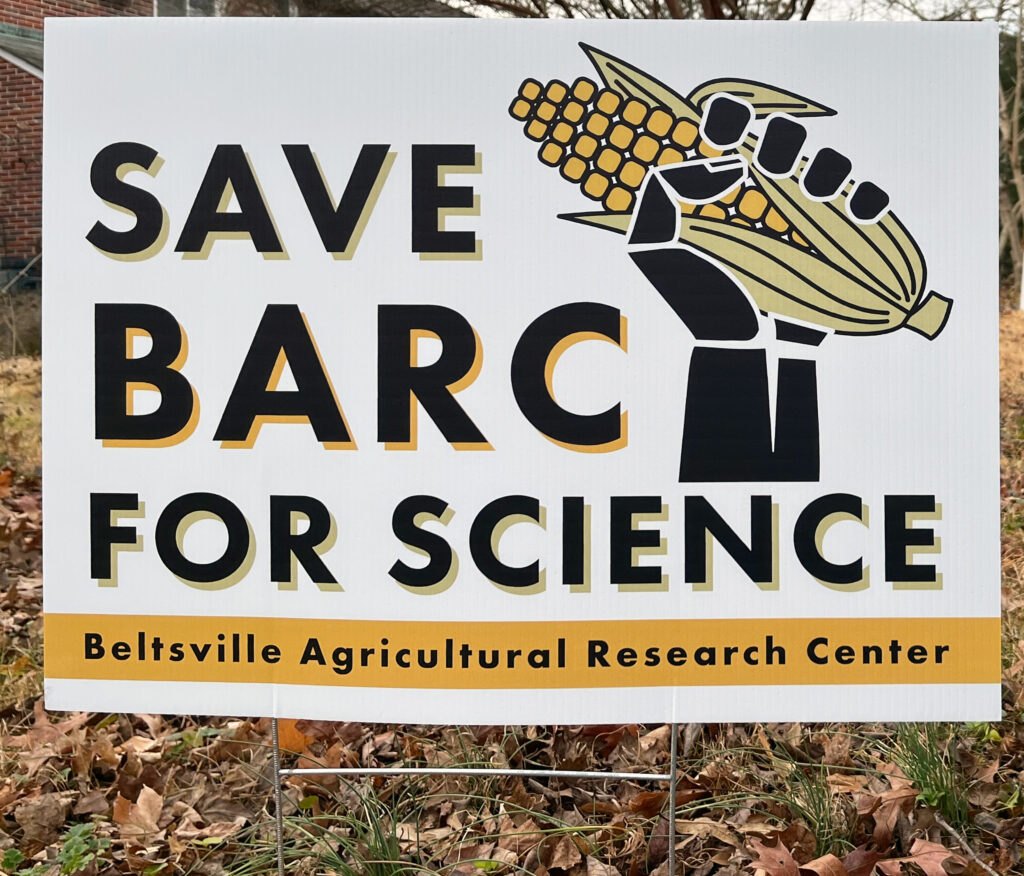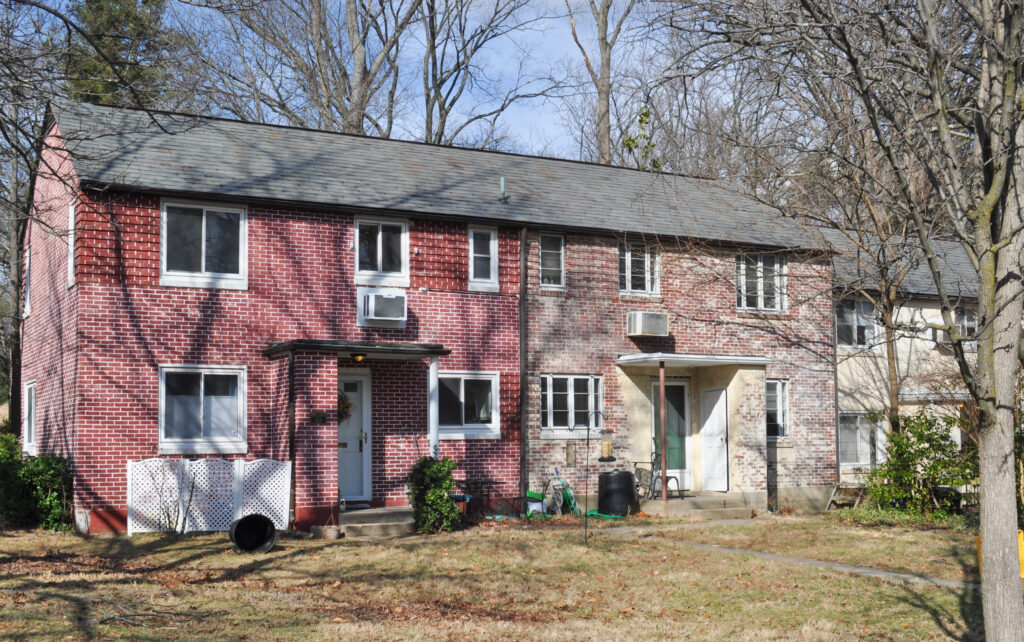Greenbelt Park provides an urban oasis, a 1,100-acre green space that local residents, along with visitors and guests from the nation’s 50 states and many foreign countries have enjoyed. Situated 13 miles from Washington, D.C., and bisected by the Baltimore-Washington Parkway, the park offers a campground and nine miles of trails, where guests can enjoy both the flora and indigenous wildlife of the region, all protected by the National Park Service.
President Harry Truman authorized the park’s creation “for recreational purposes” with the signing of House Resolution 5990/Public Law 643 in 1950. The park has evolved in its infrastructure and amenities over the years, with many planned projects left unfinished.
Prior to the 1950 legislation, a forested, park-like area existed. One of the early amenities was Camp Conestoga, a 60-acre Girl Scout camp that was in use from 1938 to 1980; in 2000 the abandoned cabins were removed to their stone foundations. In 1949, an 18-hole golf course and driving range were proposed in the area under the aegis of the Public Housing Administration but was never built.
In the original 1950 plan, the park was to have picnic grounds, campgrounds, wildlife areas and trails. Its development was intended to progress along with the Baltimore-Washington Parkway, which was constructed in 1954.
The Mission ’66 initiative emerged in 1956, aimed at modernizing and refurbishing the park into a “recreational oasis.” Only $224,000 of the promised $975,000 was allocated. Much of what was planned never came to pass, including an Olympic-size swimming pool, a shuffleboard area and a forest amphitheater. Trailer camping amenities like electrical outlets and water connections were never funded. In addition, shelters and pavilions in the group tent-camping area were never realized. So-called comfort stations, which provided showers and lavatories were built and exist currently in the campground, which opened in 1966, but camping at Greenbelt Park remains a somewhat primitive experience.
The most ambitious unrealized project was a theme park, proposed in 1972. Meant to have seven areas designed around American historical and cultural themes, the park was to include a four-mile railroad connecting the entire park and an artificial lake that would offer a paddlewheel steamboat, a whaling ship, native canoes and pirates.
The most recent upgrades were the repaving and rebuilding of Park Central Road and the parking lots, as well as the rebuilding of the bridges and culverts, originally built in the 1960s. The next project will be refurbishing and modernizing the comfort stations, which are listed on the National Register as historic buildings.
Currently, Greenbelt Park is a thriving ecosystem sustained by the Anacostia Watershed, Still Creek and Deep Creek, offering visitors three picnic areas and 174 campsites within four campground loops.
Information for this article was provided by Greenbelt Park Ranger John Reid.
